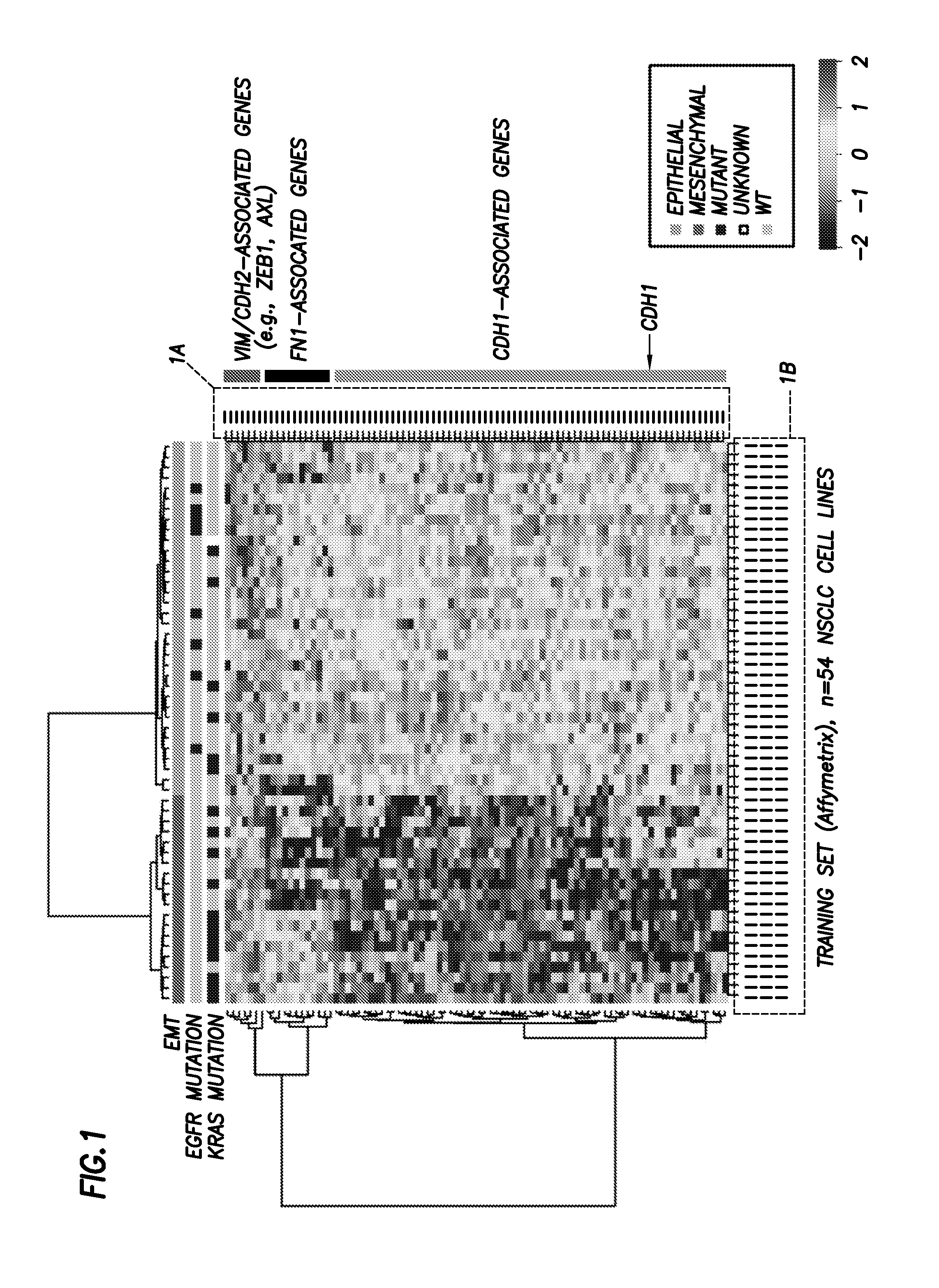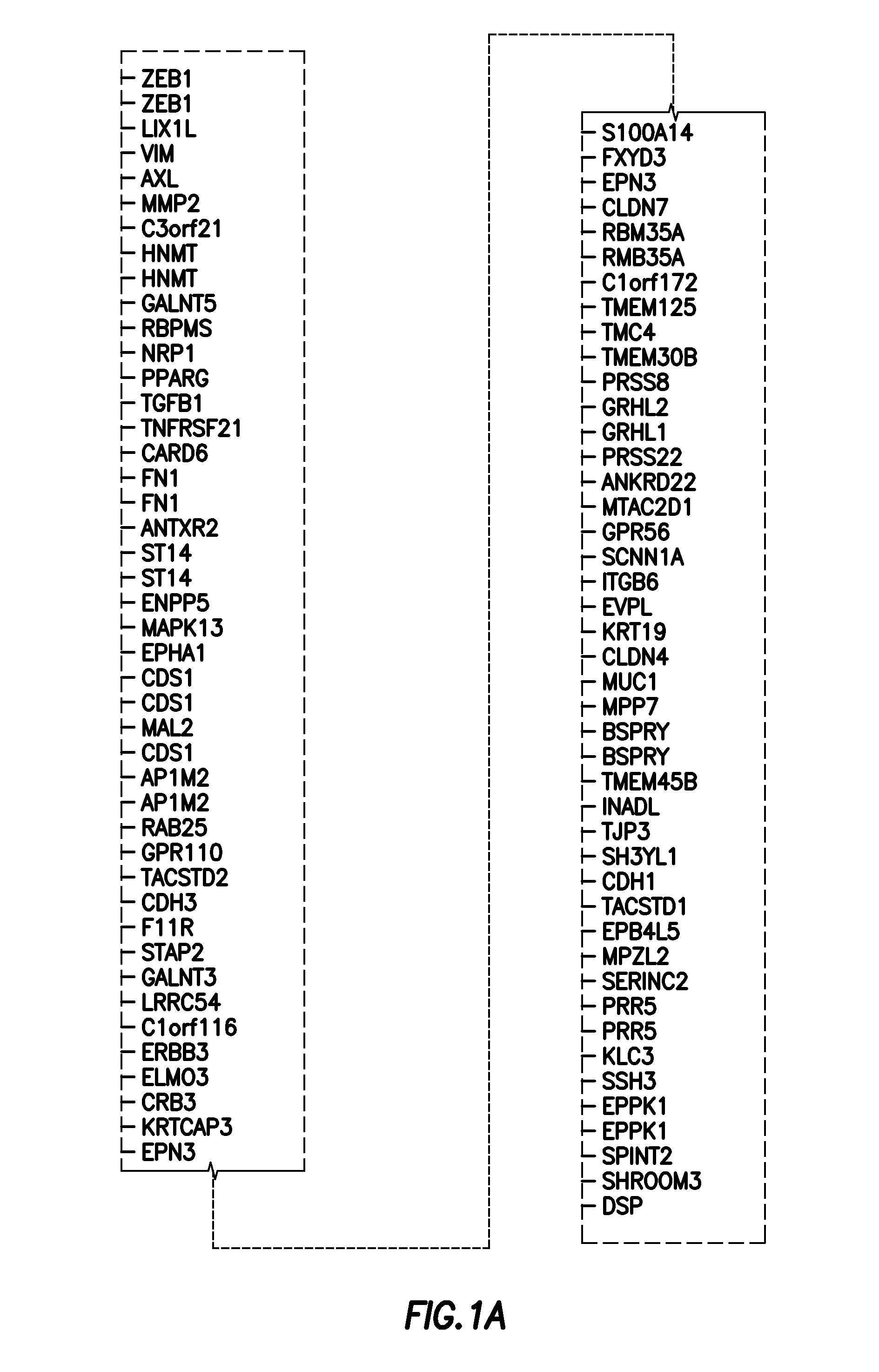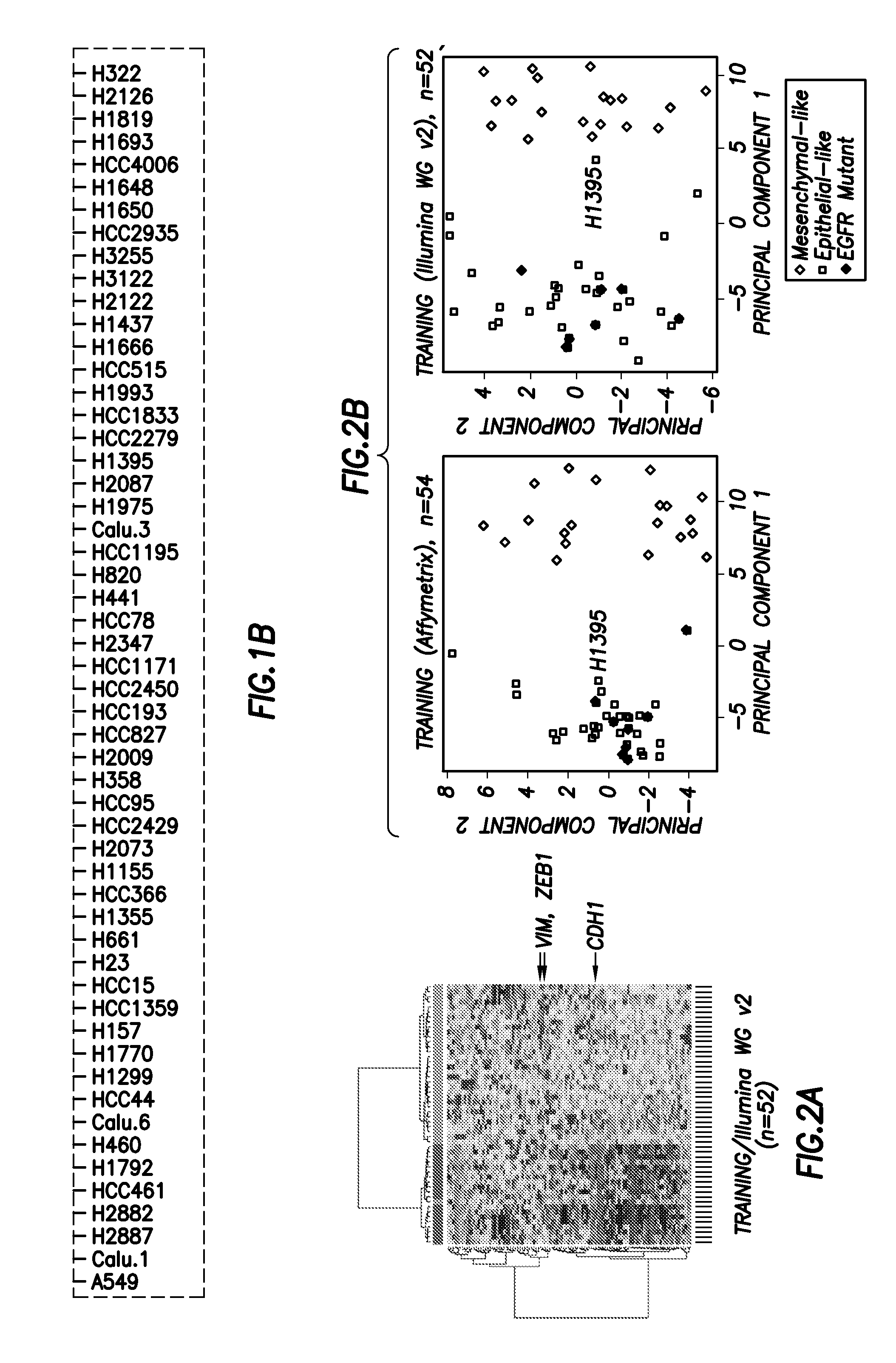Emt signatures and predictive markers and method of using the same
a predictive marker and signature technology, applied in the field of successful drug therapy, can solve the problem of no standard method for assessing emt, and achieve the effect of reliable predictor of erlotinib resistance and more accura
- Summary
- Abstract
- Description
- Claims
- Application Information
AI Technical Summary
Benefits of technology
Problems solved by technology
Method used
Image
Examples
example i
EMT Gene Signatures
Materials and Methods
[0083]Cell Lines.
[0084]NSCLC cell lines were established by John D. Minna and Adi Gazdar (20, 21) or obtained through ATCC and grown in RPMI-1640 plus 10% FBS. Identities were confirmed by DNA fingerprinting.
[0085]Selection of Single Best EMT Marker Probes.
[0086]Because the NSCLC cell line panel was profiled on both Affymetrix and Illumina microarray platforms, we were able to select the single best Affymetrix probe sets for CDH1, VIM, CDH2, and FN1 on the basis of their correlations with other Affymetrix probes and Illumina WG v2 probes for the same gene transcript (FIG. 8). For example, measurements from the two Affymetrix CDH1 probes (201130_s_at and 201131_s_at) were not well correlated (r=0.303), suggesting that at least one was likely to be of poor quality. To determine which probe set most accurately assessed CDH1 mRNA, we compared measurements from the Affymetrix CDH1 probe sets with those from the Illumina WGv2 CDH1 probe set. Probe s...
example ii
Refinement EMT Signature—76 to 35 Genes
Materials / Methods
[0127]The EMT signature was derived in 54 DNA fingerprinted NSCLC cell lines profiled on Affymetrix U133A, B, and Plus2.0 arrays and tested on the Illumina WGv2 and WGv3 platforms and in an independent set of head and neck cancer lines (HNC). E-cadherin and other protein levels were quantified by reverse phase protein array and correlated with the first principal component of the EMT signature. IC50s were determined for NSCLC cell lines by MTS assay. Response to erlotinib was evaluated in patients treated in the BATTLE clinical trial using eight-week disease free status and progression free survival.
[0128]In the original EMT signature, genes were selected based on two criteria. First, they must be correlated with one of four EMT genes (CDH1, VIM, FN1 and CDH2). Second, they must be biomodally distributed. A third requirement was added to improve the signature. The third criteria is that the genes included in the signature come ...
example iii
The Five-Gene Signature
[0132]A five-gene signature for predicting benefit in patients with non-small cell lung cancer treated with erlotinib is provided herein. (FIG. 27) This gene signature as well as the individual markers can be used to identify which NSCLC patients are more likely to respond to erlotinib. This signature may help select patients that will experience greater benefit from a specific treatment regimen for NSCLC and other cancers, and potentially spare patients who are less likely to benefit from receiving toxic therapy. This signature may also be useful for predicting response to other EGFR inhibitors in NSCLC as well as other tumor types.
[0133]We conducted an analysis of tissue samples at MDACC from a trial of non-small cell lung cancer patients treated in the BATTLE trial. The analysis was conducted using the Affymetrix gene expression array platform. The five-gene signature was validated in a panel of NSCLC cell lines and predicts clinical response to erlotninib....
PUM
| Property | Measurement | Unit |
|---|---|---|
| drug resistance | aaaaa | aaaaa |
| resistance | aaaaa | aaaaa |
| structure | aaaaa | aaaaa |
Abstract
Description
Claims
Application Information
 Login to View More
Login to View More - R&D
- Intellectual Property
- Life Sciences
- Materials
- Tech Scout
- Unparalleled Data Quality
- Higher Quality Content
- 60% Fewer Hallucinations
Browse by: Latest US Patents, China's latest patents, Technical Efficacy Thesaurus, Application Domain, Technology Topic, Popular Technical Reports.
© 2025 PatSnap. All rights reserved.Legal|Privacy policy|Modern Slavery Act Transparency Statement|Sitemap|About US| Contact US: help@patsnap.com



